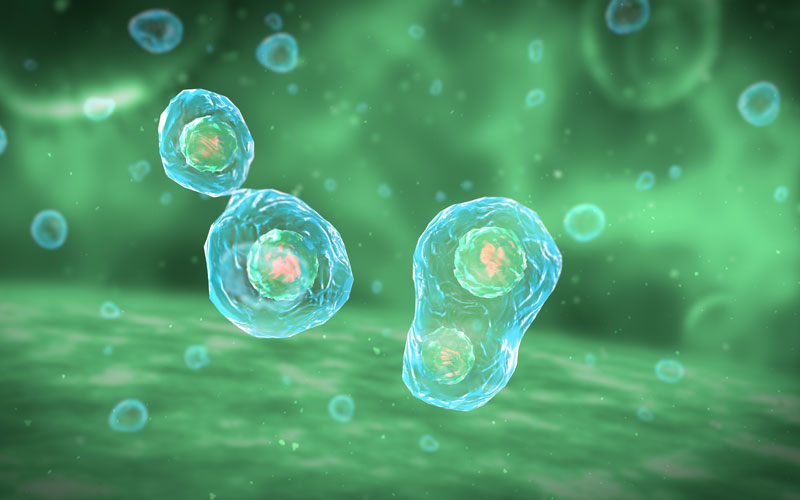8 Ways Your Body Makes Energy You've Probably Never Heard Of
Next time you’re feeling low on energy, don’t turn to caffeine, turn to ATP.

Energy is life. Our bodies are an intricately complex system built for the essential work of generating and dispersing energy. And our mitochondria are these little energy-making machines inside almost every single one of our cells. But believe it or not, we’re the ones in control of how much energy they make. Our lifestyle habits have a huge effect on how much energy our cells create. The more active we are, the more energy our cells require, which then causes our mitochondria to increase its density to match those needs. But the reverse is also true. A sedentary lifestyle can signal to the body to create less energy, and actually inhibit our body’s natural production of its most vital energy resources.
Here’s a glimpse at what’s going on at a cellular level when it comes to energy.
1. Mitochondria
You may remember these being referred to as the “powerhouse of the cell,” and it’s true. Without these little “organelles,” we couldn’t turn food or drinks into the energy we need to survive.
2. The Matrix

The matrix is real, it’s a gel-like material, and it’s inside of every single one of your cells (with mitochondria). This “mitochondrial matrix” is where we release stored energy.
3. Citric Acid Cycle

This series of very fortunate chemical reactions is used to release some of that stored energy in the matrix. It’s so important, it goes by two names (aka the Krebs Cycle).
4. Prokaryotic Ancestry

Even our cells have an ancestry, in this case specifically our mitochondria. These leftover bits from the single-cell, simple organisms are the reason why mitochondria can divide and replicate themselves independently of the cells they’re in. This allows the mitochondria to adjust their shape and structure depending on our cell’s metabolic needs.
5. Fission

When mitochondria divide, it’s called fission, and it’s just one of the many ways they maintain our cells’ ability to create energy.
6. Adenosine Triphosphate (ATP)

This molecule IS energy. Whenever you’re tired, you don’t need more caffeine, you need more ATP. Creating it is basically a highly advanced, microscopic game of hot potato. Our cells toss electrons from the carbs, fats, and proteins we consume over to oxygen molecules. Which allows the other essential ATP creation processes to complete.
7. Nicotinamide adenine dinucleotide (NAD)

This molecule is found in every living cell and helps generate ATP. NAD is an essential part of the process, but also changes in supply depending on our lifestyle habits and needs.
8. Cellular Respiration

This complicated multi-step process uses ATP, the Citric Acid Cycle, and NAD to continually break down sugar from our food and drinks and turn them into the energy we need to stay healthy.
Energy creation begins and ends with our cells. Sure, daily exercise is great for that midday boost and sometimes we only have time for a caffeine rush. But if we really desire to feel more energetic throughout the day and for the rest of our lives, we shouldn’t settle for a quick fix. We need to pay attention to the parts of our bodies that create that energy and find better ways of giving them the resources they need to function at their best (so we can too).


